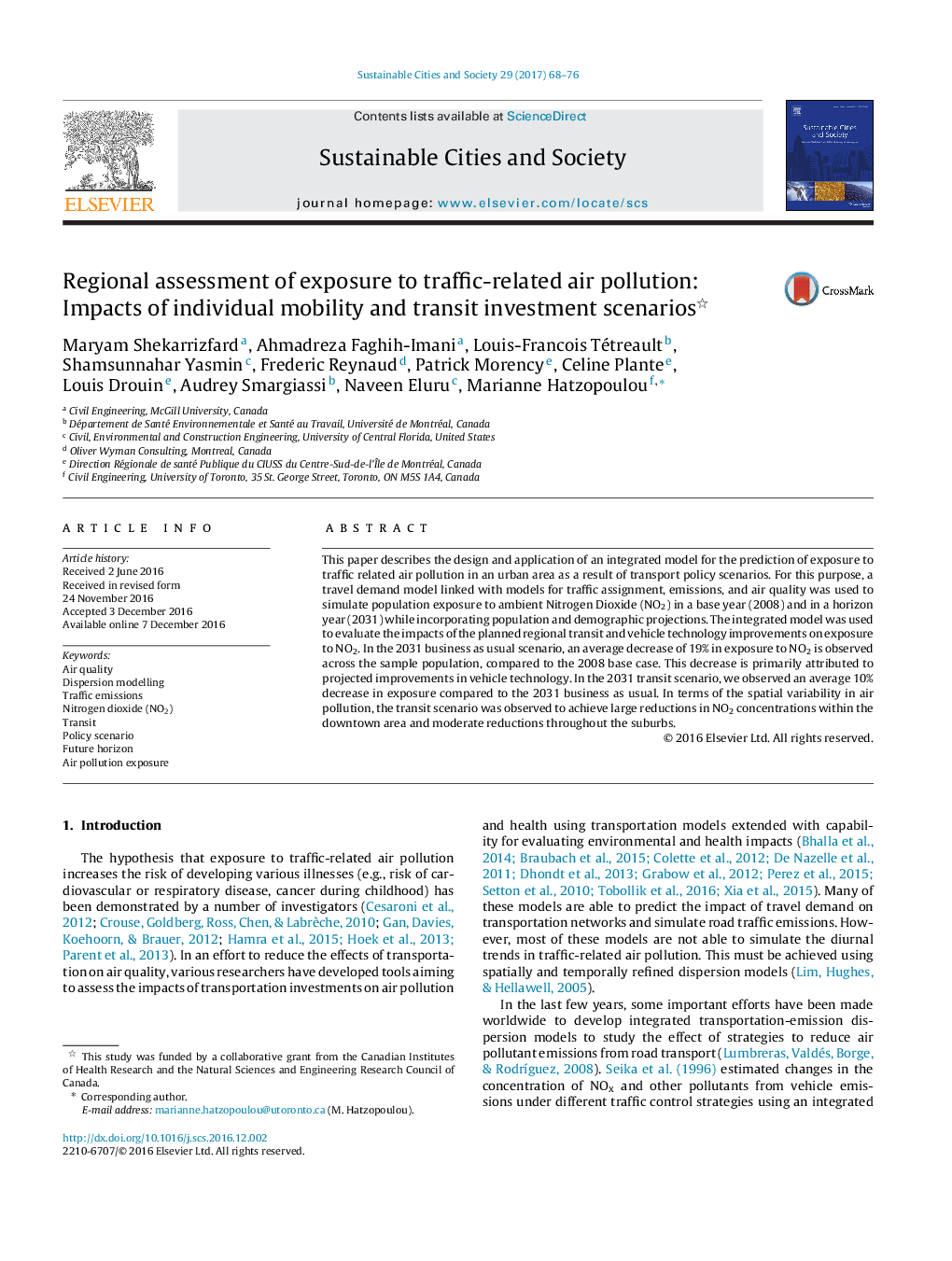| Article ID | Journal | Published Year | Pages | File Type |
|---|---|---|---|---|
| 4928268 | Sustainable Cities and Society | 2017 | 9 Pages |
Abstract
This paper describes the design and application of an integrated model for the prediction of exposure to traffic related air pollution in an urban area as a result of transport policy scenarios. For this purpose, a travel demand model linked with models for traffic assignment, emissions, and air quality was used to simulate population exposure to ambient Nitrogen Dioxide (NO2) in a base year (2008) and in a horizon year (2031) while incorporating population and demographic projections. The integrated model was used to evaluate the impacts of the planned regional transit and vehicle technology improvements on exposure to NO2. In the 2031 business as usual scenario, an average decrease of 19% in exposure to NO2 is observed across the sample population, compared to the 2008 base case. This decrease is primarily attributed to projected improvements in vehicle technology. In the 2031 transit scenario, we observed an average 10% decrease in exposure compared to the 2031 business as usual. In terms of the spatial variability in air pollution, the transit scenario was observed to achieve large reductions in NO2 concentrations within the downtown area and moderate reductions throughout the suburbs.
Keywords
Related Topics
Physical Sciences and Engineering
Energy
Renewable Energy, Sustainability and the Environment
Authors
Maryam Shekarrizfard, Ahmadreza Faghih-Imani, Louis-Francois Tétreault, Shamsunnahar Yasmin, Frederic Reynaud, Patrick Morency, Celine Plante, Louis Drouin, Audrey Smargiassi, Naveen Eluru, Marianne Hatzopoulou,
